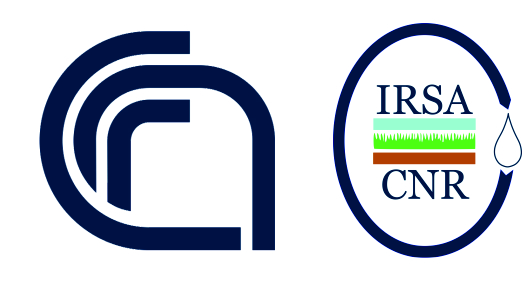| Title | Sequential anaerobic/aerobic digestion for enhanced sludge stabilization: comparison of the process performance for mixed and waste sludge |
| Abstract | Sequential anaerobic-aerobic digestion has been
demonstrated as a promising alternative for enhanced sludge
stabilization. In this paper, a feasibility study of the sequential
digestion applied to real waste activated sludge (WAS) and
mixed sludge is presented. Process performance is evaluated
in terms of total solid (TS) and volatile solid (VS) removal,
biogas production, and dewaterability trend in the anaerobic
and double-stage digested sludge. In the proposed digestion
lay out, the aerobic stage was operated with intermittent
aeration to reduce the nitrogen load recycled to the wastewater
treatment plant (WWTP). Experimental results showed a very
good performance of the sequential digestion process for both
waste and mixed sludge, even if, given its better digestibility,
higher efficiencies are observed for mixed sludge. VS removal
efficiencies in the anaerobic stage were 48 and 50% for waste
and mixed sludge, respectively, while a significant additional
improvement of the VS removal of 25 % for WAS and 45 %
for mixed sludge has been obtained in the aerobic stage. The
post-aerobic stage, operated with intermittent aeration, was
also efficient in nitrogen removal, providing a significant
decrease of the nitrogen content in the supernatant: nitrification
efficiencies of 90 and 97%and denitrification efficiencies
of 62 and 70 % have been obtained for secondary and mixed
sludges, respectively. A positive effect due to the aerobic stage
was also observed on the sludge dewaterability in both cases.
Biogas production, expressed as Nm3/(kgVSdestroyed), was
0.54 for waste and 0.82 for mixed sludge and is in the range
of values reported in the literature in spite of the low anaerobic
sludge retention time of 15 days. |
| Source | Environmental science and pollution research international 22, pp. 7271–7279 |
| Keywords | Anaerobic-aerobic digestionIntermittent aerationNitrogen fateNitrogen removalSequential digestionSludge dewaterabilityVS removal |
| Journal | Environmental science and pollution research international |
| Editor | Springer, Berlin, Germania |
| Year | 2015 |
| Type | Articolo in rivista |
| DOI | 10.1007/s11356-014-3130-2 |
| Authors | Tomei, Maria Concetta; Carozza, Nicola Antonello |
| Text | 323439 2015 10.1007/s11356 014 3130 2 Scopus 2 s2.0 84901879229 Anaerobic aerobic digestion Intermittent aeration Nitrogen fate Nitrogen removal Sequential digestion Sludge dewaterability VS removal Sequential anaerobic/aerobic digestion for enhanced sludge stabilization comparison of the process performance for mixed and waste sludge Tomei, Maria Concetta; Carozza, Nicola Antonello Water Research Institute, C.N.R., Via Salaria km 29.300, C.P. 10 00015 Monterotondo Stazione Rome, Italy Sequential anaerobic aerobic digestion has been demonstrated as a promising alternative for enhanced sludge stabilization. In this paper, a feasibility study of the sequential digestion applied to real waste activated sludge WAS and mixed sludge is presented. Process performance is evaluated in terms of total solid TS and volatile solid VS removal, biogas production, and dewaterability trend in the anaerobic and double stage digested sludge. In the proposed digestion lay out, the aerobic stage was operated with intermittent aeration to reduce the nitrogen load recycled to the wastewater treatment plant WWTP . Experimental results showed a very good performance of the sequential digestion process for both waste and mixed sludge, even if, given its better digestibility, higher efficiencies are observed for mixed sludge. VS removal efficiencies in the anaerobic stage were 48 and 50% for waste and mixed sludge, respectively, while a significant additional improvement of the VS removal of 25 % for WAS and 45 % for mixed sludge has been obtained in the aerobic stage. The post aerobic stage, operated with intermittent aeration, was also efficient in nitrogen removal, providing a significant decrease of the nitrogen content in the supernatant nitrification efficiencies of 90 and 97%and denitrification efficiencies of 62 and 70 % have been obtained for secondary and mixed sludges, respectively. A positive effect due to the aerobic stage was also observed on the sludge dewaterability in both cases. Biogas production, expressed as Nm3/ kgVSdestroyed , was 0.54 for waste and 0.82 for mixed sludge and is in the range of values reported in the literature in spite of the low anaerobic sludge retention time of 15 days. 22 Published version http //www.scopus.com/record/display.url eid=2 s2.0 84901879229 origin=inward Sequential anaerobic/aerobic digestion for enhanced sludge stabilization comparison of the process performance for mixed and waste sludge ESPR_AA_2014.pdf Articolo in rivista Springer 0944 1344 Environmental science and pollution research international Environmental science and pollution research international Environ. sci. pollut. res. int. Environmental science and pollution research international. Environmental science and pollution research international Print Environmental science and pollution research Print ESPR Print mariaconcetta.tomei TOMEI MARIA CONCETTA TA.P07.002.005 Rimozione di composti xenobiotici da acque di scarico |
